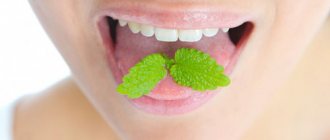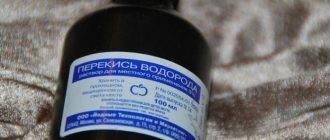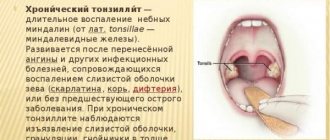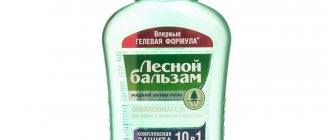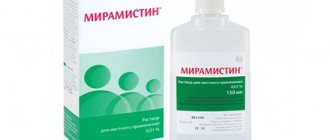Causes
Since it is the tonsils, which are responsible for the timely neutralization of pathogenic microorganisms that enter the cavity of the nasopharynx and throat, that bear the main burden during the development of the disease, their regular washing and medicinal treatment can quickly eliminate this unpleasant manifestation.
Formed by lymphatic tissue, the tonsils are located in the back third of the throat and their main function is to adsorb pathogenic bacteria, food debris and dead particles of the cells of the tonsils themselves. They contain depressions of various sizes, or lacunae, which serve as places for the accumulation of these particles.
However, this unpleasant manifestation, which occurs at the onset of tonsillitis and intensifies as the disease progresses, more often indicates the relationship between the processes of inflammation occurring in the oral cavity and the degree of intensification of the unpleasant amber.
Probable Causes
An unpleasant “aroma” may appear in the following cases:
- with the development of sinusitis due to the accumulation of a large number of microorganisms in the area of the tonsils and tonsils;
- lack of oral hygiene;
- excessive growth of adenoids with ongoing inflammatory processes in them with the formation of purulent deposits;
- when the inflammatory process increases due to colds;
- bad habits that provoke the formation of an unpleasant odor. These include smoking, abuse of alcoholic beverages and strong-smelling substances;
- as a result of prolonged accumulation of undigested food residues and dead cells of the glands and lymphatic tissue.
However, most often, tonsils emit an unpleasant odor when specific plugs form in them, which, when left for a long time in the lacunae (recesses of the tonsils), begin to decompose and emit a disgusting odor, which can even negatively affect a person’s social activity.
Neutralization of this manifestation requires the use of certain measures that eliminate both the cause and its effect. Indeed, with an exacerbation of the disease, there will be an increase in the intensity of this manifestation, which can occur both during mouth breathing and when breathing through the nose.
The cause of tonsillitis can be not only infection from a sick person. Thus, the disease often occurs due to:
- Stomatitis, caries.
- Ethmoiditis.
- Sinusitis, pharyngitis, laryngitis, ARVI.
- Severe hypothermia.
- Stress due to weakened immunity.
- Dysbacteriosis.
- Chronic rhinitis, adenoiditis.
- Abuse of flour, sweets, carbonated drinks.
- Smoking.
Tonsillitis can also appear after an untreated sore throat or due to neglect of personal hygiene rules.
Since it is the tonsils, which are responsible for the timely neutralization of pathogenic microorganisms that enter the cavity of the nasopharynx and throat, that bear the main burden during the development of the disease, their regular washing and medicinal treatment can quickly eliminate this unpleasant manifestation.
Reasons for the appearance of a purulent odor during inflammation of the tonsils
To understand the nature of the development of odor during tonsillitis, you need to understand the essence of this disease. Tonsillitis is a chronic inflammatory process of the lymphoid tissues of the tonsils.
Pathogenic microorganisms, rapidly developing, are localized throughout the oral cavity. Moreover, pathogens contribute to the formation of purulent discharge, which accumulates on the tonsils and causes bad breath.
Why does my breath smell when I have tonsillitis? The tonsils, which have natural depressions or lacunae, absorb most of the pathogenic bacteria - pathogenic microorganisms, while retaining the remnants of their vital activity, decomposing pieces of food and particles of dead cells of the tissues of the oral cavity. This is exactly how unpleasant clots appear on the tonsils, causing over time the appearance of a purulent odor.
The inflammatory process can occur for various reasons (hypothermia; bacterial or viral infections; dental diseases and much more), but the consequence most often is the formation of purulent plugs in the lacunae of the tonsils. It is from them that the unpleasant odor of pus comes from the mouth.
In advanced forms of the disease, these plugs turn into almond stones: they harden in the lacunae of the tonsils when calcium salts are deposited. Often patients can see them with their mouths wide open: white calcified deposits appear on the inflamed tonsils, which give off an unpleasant odor.
What do tonsil plugs and stones look like?
Chronic tonsillitis is accompanied by the formation of plugs in the tonsils. Bad breath due to tonsils is a consequence of the formation of plugs and plaque. The problem must be dealt with comprehensively, not just by eliminating the odor, but also by curing the chronic disease.
Bad breath is a consequence of damage to the tonsils by pathogenic bacteria. To make your breath fresh, it is necessary to eliminate discharge and plaque from the tonsils associated with an unpleasant odor.
At home, it is suggested to use various solutions for gargling.
The advisability of using sprays and lozenges for a sore throat depends on whether there are other unpleasant symptoms. Rinsing is more effective because it washes away plaque from lacunae, while sprays and lozenges only temporarily eliminate pain.
When there is an unpleasant odor, the tonsils are covered with plaque, and there are no special remedies at hand, simple salt will come to the rescue. However, it is better to use iodized or sea salt for rinsing. To prepare the solution, you need to thoroughly mix 1 teaspoon in a glass of water at a comfortable temperature (37-38 degrees). Then gargle, keeping one portion of the solution in your mouth for at least 30 seconds.
It is recommended to repeat the procedure every 4 hours in the first 2 days of treatment, then 3 times a day.
Sage herb is a very good folk antiseptic.
The goal of treatment is to get rid of foul-smelling discharge from the tonsils. To do this, you need to gargle with products with antiseptic properties, otherwise the water will only temporarily clear the gaps, but after a few hours the plaque will return.
Among folk remedies, it is suggested to use decoctions of chamomile, calendula or sage. To prepare the medicine, you need to take a large spoon of the raw material and add 300 ml of water. Cook over low heat for 15-20 minutes, then cool and strain.
The resulting decoction is diluted in half with water. The amount of medicine prepared according to the prescription is enough for 3-4 rinses.
Lugol's solution
Lugol's solution will help eliminate bad breath due to inflamed tonsils with tonsillitis. You can buy it at any pharmacy. The product has a powerful antiseptic effect. The solution can be used as an independent remedy, lubricating the tonsils with it 2-3 times a day, or as an aid to rinsing. In the latter case, the solution is applied to the tonsils after gargling.
Otolaryngologists use this remedy to reduce the risk of infection of the tonsils after manipulations, for example, washing lacunae. Lugol not only eliminates bacteria already present on the tonsils, but also prevents their spread or re-infection.
The product is applied to the tonsils using a cotton swab.
The tablets must first be dissolved in warm water.
The unpleasant odor of unhealthy tonsils can be eliminated with the help of antibiotics. Potent drugs in tablets are not used without a doctor’s prescription, but simple drugs such as Furacilin can be freely used before visiting a doctor.
We suggest you familiarize yourself with the smell of rot after tooth extraction
To prepare the solution, you need to crush one tablet of the medicine into powder and dissolve it in a glass of water. The tablets are very hard, so it is recommended to use a mortar. Another simple option is to place the tablet in a spoon, cover it with the back (convex) side of the second spoon and press firmly. The tablet will immediately turn into a yellow powder, which can only be poured into water.
The rinse solution should be warm - about 37 degrees. The procedure should be carried out twice a day.
Chlorine dioxide
If your tonsils smell unpleasant and bad breath deprives you of self-confidence, it is recommended to purchase a chlorine dioxide solution at the pharmacy. This is a powerful antiseptic that effectively cleanses plaque from the tonsils and makes your breath fresh.
Chlorine dioxide is used as first aid against plaque, but is not suitable for constant use, as it dries out the mucous membranes greatly.
To remove unpleasant plaque from the tonsils and bad breath, you need to take a little chlorine dioxide solution into your mouth and gargle thoroughly for 2-3 minutes.
Sodium chloride solution is a saline solution that can be purchased at any pharmacy. Also, all pharmacy chains offer a solution with zinc, which has a powerful antiseptic effect. This product can quickly remove the smell of tonsils and will help get rid of plaque in the shortest possible time.
There is no need to dilute the prepared solution; it is used in its pure form. Rinsing is carried out for several minutes, the procedure must be repeated three times a day.
There are white lumps in the throat with an unpleasant odor: pus on the tonsils
These are tonsillar plugs or stones; they form in the lacunae - the recesses of the tonsils. Their color, size, shape, and consistency depend on the composition. Most often, white lumps of soft consistency are observed; in some cases, if the composition contains calcium compounds, the lumps can be dense.
White lumps in the lacunae are formed from exfoliated old mucosal cells, bacteria and a small amount of food debris. Sometimes the lumps contain pus, and then they acquire an unpleasant odor and a yellowish tint.
You should know! When white and yellow lumps appear, a person experiences a sensation of the presence of a foreign body in the tonsils, a sore throat and bad breath.
Reasons for appearance
Experts say that the appearance of white lumps in the throat is a consequence of an inflammatory process, for example, chronic tonsillitis. This is an infectious pathology that develops against the background of weak immunity.
Provocateurs can be:
- sore throats that have not been fully treated;
- frequent consumption of cold drinks;
- ARVI and acute respiratory infections;
- smoking;
- alcoholism;
- stress;
- lack of work and rest schedule;
- bad ecology;
- work in hazardous production.
- chlamydia;
- microplasma;
- viruses;
- Candida fungi.
However, the exact reasons for the appearance of white lumps in the throat are not fully known, since in some people they appear during an exacerbation of tonsillitis, while in others they do not.
According to statistics, more often white lumps appear in the throat of men.
The yellow color of the lumps indicates a purulent process. Therefore, it is very important not to start inflammatory processes in the throat and treat them promptly and efficiently. If there is no therapy, calcium and magnesium salts join the white blood cells that surround the bacteria, and then the lumps become hard.
Since the function of the tonsils is a barrier - they protect the lower respiratory tract from the penetration of pathogenic flora into them, a failure in their work can lead to a large number of negative consequences.
In addition, healthy tonsils are directly involved in the synthesis of lymphocytes and in the regulation of immune processes.
When the tonsils are damaged, they begin to work against their own body and damage target organs:
- heart – rhythm disturbances, myocarditis, endocarditis, tonsillocardial syndrome, etc.;
- kidneys – nephritis, pyelonephritis, glomerulonephritis;
- liver – cholecystitis, toxic hepatitis;
- joints;
- genitourinary organs.
Systemic pathologies such as:
- rheumatism;
- psoriasis;
- polyarthritis;
- neurodermatitis and so on.
In some cases, the pathology may be complicated by a peritonsillar abscess, which requires immediate treatment in a hospital setting.
We suggest you read: Cloves for toothache, bad breath: how to take
Important! After a sore throat or tonsillitis, it is necessary to donate blood and undergo a cardiogram in a couple of weeks in order to exclude the acquisition of another chronic disease due to tonsillitis.
Chronic tonsillitis is accompanied by the following symptoms:
- Expectoration of white or purulent lumps with a foul odor. White and yellow stinking balls are coughed up not only when coughing and sneezing, but sometimes even during normal conversation. In most cases, they are no larger than a match head, but they can be quite large.
- White plaques can be observed on the surface of the tonsils, but it happens that they are concentrated in the deep layers and remain invisible.
- The patient complains of a constant sore throat, especially in the morning; sometimes this symptom can be so pronounced that the person begins to choke.
- Sore throat and redness prevent a person from swallowing saliva normally, and then food and water.
- Discomfortable sensation of the presence of a foreign body in the tonsil area, many complain of the sensation of a large lump in the throat.
- An unpleasant odor from the oral cavity, most often it is so pronounced that it can be felt by people around.
- Enlarged cervical lymph nodes.
- General malaise, aches.
- Unproductive cough - a person tries to clear his throat, but he does not always succeed.
White lumps are not always cleared up when coughing; it can also be a thick mucous mass. Its jelly-like consistency makes it difficult to cough up completely. However, a person may not be bothered by any other signs other than lumps leaving the throat.
- In the photo you can see examples of the appearance of lumps:
Since the presence of white lumps in the throat negatively affects the state of the human immune system, and they can give impetus to the development of complications and chronic pathologies of target organs, it is imperative to get rid of them.
Keep in mind! In addition to the complications listed above, the balance of microflora in the oral cavity is disrupted, and pathogenic microorganisms begin to actively multiply. At the same time, they can penetrate the organs of the digestive tract and provoke ulcers, dysbacteriosis and other pathologies.
If you find white or yellow lumps coughing up from the throat or located on the surface of the tonsils, you should visit a pediatrician or therapist. The specialist will conduct an examination and, if necessary, give a referral to an ENT specialist or an infectious disease specialist.
To clarify the diagnosis, the patient is prescribed:
- general blood analysis;
- immunogram;
- ECG;
- Analysis of urine;
- throat swab.
Based on the results of these studies, the doctor can determine the severity of the pathology and select a treatment regimen that is appropriate to the situation.
The patient must be prepared for the fact that the treatment will be quite long and complex. The treatment regimen is prescribed in several directions at once:
- strengthening the immune system;
- gargling and rinsing;
- exposure to antibacterial drugs;
- physiotherapy.
Before treating chronic tonsillitis, it is necessary to get rid of caries, since carious teeth are another source of infection.
In addition, you need to adjust your diet and review your daily routine. The following is recommended:
- spend more time outdoors;
- eat more vegetables, fruits, seafood;
- take vitamin complexes, especially in the autumn-winter period;
- sleep enough time.
It's nice to visit a seaside resort.
This method, although old, is very effective and widespread, especially in district clinics. The procedure is carried out as follows:
- A brass replacement tip is attached to the syringe.
- The patient's larynx is treated with lipocaine to reduce discomfort.
- The lacunae are irrigated with a special solution, with the help of which purulent plugs, white lumps, bacteria and their waste products are washed out.
The procedure lasts 10 minutes and is considered traumatic, since the cannula can damage the mucous membrane if the patient twitches or if the doctor does not have enough experience.
In addition, it will be difficult for those who have a particularly strong gag reflex.
Moreover, to wash the tortuous passages, one procedure will not be enough; 6-10 sessions will be required, but after a couple of procedures the patient will be able to tolerate them more easily.
Vacuum rinsing using the Tonsilor device is a more gentle way to get rid of plugs and white lumps. In this case, ultrasound is used. The full course is 5 procedures, during which the contents of the tonsils are sucked out.
Important! Remission after hardware rinsing can last a couple of years, and if you actively increase immunity during this time, then you can forget about white lumps with an unpleasant odor forever.
Washing the tonsils gives a very good effect if combined with physiotherapeutic treatment. The main goal of physiotherapy is to restore the proper functioning of the tonsils and improve blood supply to the lymph nodes. The course of treatment is 10-12 procedures. The most popular methods are:
- Ultrasound. This method has a number of contraindications, but it is absolutely painless and effectively stops the inflammatory process in the tonsils.
- UHF warming up. Eliminates swelling in the area of the tonsils and lymph nodes.
- UV irradiation. The inflammatory process is relieved using ultraviolet radiation.
- Laser therapy. The tonsils are treated with a laser, which leads to the complete elimination of swelling and inflammation. The method has no contraindications.
Inhalations, electrophoresis, and magnetic therapy may also be recommended.
Drug therapy to strengthen the immune system involves taking the following medications:
- Levamisole.
- Immunofan.
- Isoprinosine.
- Methyluracil.
- Bemitil.
- Immunomax.
Note! As for vitamins, a complex of vitamins with a high content of vitamin C is mainly prescribed. Antibacterial agents can also be prescribed, but only after analyzing the sensitivity of the bacterial flora to the components of the drugs.
We suggest you read: The jaw hurts near the ear when chewing: why and what to do, causes, treatment methods
The dosage and duration of taking antibacterial agents is prescribed only by a doctor.
If conservative treatment is ineffective, the patient is recommended to undergo surgery.
If the pathology is mild, the doctor may advise treating it at home with the help of medicines or traditional medicine. However, they should only be prescribed by a specialist. Activities you can do at home:
- Flushing the throat. To do this, you can use a solution of Furacilin, a weak solution of iodine, a solution of hydrogen peroxide, an infusion of sage or chamomile. The liquid must be drawn into a syringe without a needle and directed at the tonsils. To prevent liquid from entering the respiratory tract, the head should be tilted down over the sink. The procedure is carried out 5 times a day, after which you are not allowed to drink or eat for 40 minutes.
- Inhalations. Herbal decoctions and infusions are used - oak bark, sage, eucalyptus, chamomile. A decoction of medicinal herbs or a few drops of essential oil are added to the water heated in a bowl. You need to bend over the dishes and cover your head with a towel. You need to breathe deeply, through your mouth. It is better to carry out such procedures before bedtime. At elevated temperatures, inhalation is prohibited.
- Gargling. Indispensable helpers in the fight against white lumps in the throat are iodine, salt and soda.
- Strengthening the immune system. A tincture of echinacea or eleutherococcus is recommended.
What can't you do?
Some people try to get rid of lumps on their tonsils without the help of doctors, using improvised means. Doing this is strictly prohibited!
This can lead to injury to the mucosa, which will significantly worsen the course of the pathology, providing pathogenic flora with a favorable environment for reproduction. If bacteria get into the blood, they will be carried by current throughout the body, which can lead to the worst thing - blood poisoning.
Prevention
Prevention
Simple preventive measures will help reduce the unpleasant manifestations of tonsillitis:
- Regular visits to the dental office and careful adherence to oral hygiene help prevent the occurrence of oral diseases, infections of teeth and gums;
- use of rinses with zinc, sodium chloride and chlorine dioxide. This product removes sulfur deposits and unpleasant odors very well;
- timely seeking medical help at the first signs of tonsillitis helps prevent exacerbation and reduce the negative manifestations of the disease;
- giving up cigarettes and drinking alcohol during treatment for tonsillitis helps reduce the activity of pathogenic bacteria and significantly speed up the healing process;
- rinsing after each meal, using special products, not only cleanses the oral cavity, but also prevents the increase in bad breath due to chronic tonsillitis.
Preventive measures for the occurrence of this side effect when inflammatory processes in the body are activated include regular examination by an ENT doctor, who will be able to detect the onset of the disease in time and recommend the necessary treatment, taking stimulating immunomodulating drugs, introducing healthy habits and getting rid of bad addictions.
Stimulating the secretion of saliva can help greatly, which, when released, naturally flushes the lacunae and brings out deposits and plugs of purulent content.
To prevent the development of the disease or its relapse after recovery, the following preventive measures must be taken:
- Visit the dentist periodically and prevent infection from occurring in the oral cavity.
- Follow the rules of oral hygiene - promptly remove food debris between the teeth, rinse your throat after brushing your teeth.
- For sinusitis, otitis, and rhinitis, resort to rinsing and moistening the nasal passages with saline solutions.
Important factors in the fight against tonsillitis are quitting smoking and revising your diet, which involves eliminating sweet and starchy foods, as well as carbonated drinks, from your diet. To increase the body's defenses, it is recommended to spend more time in the fresh air, consume sufficient amounts of vitamins and subject the body to moderate physical activity.
Regular visits to the dentist and good oral hygiene will significantly reduce the risk of developing pathogenic bacteria in the mouth.
Getting rid of odor from tonsils is a rather labor-intensive undertaking. Rinsing alone is not enough, you definitely need to rinse your tonsils, but at home this is problematic. To remove plugs, it is recommended to consult an otolaryngologist, but do not try to do it yourself.
To defeat the bacteria that secrete plaque, leading to the appearance of an unpleasant odor from the tonsils, an integrated approach is required. Treatment is long-term and does not guarantee that the problem will not return after a few months. To avoid the re-development of chronic tonsillitis, you must adhere to the following prevention recommendations:
- strengthen immunity;
- no smoking;
- monitor oral hygiene;
- treat any diseases in a timely manner;
- eat solid foods carefully.
Any hard and rough food can damage the tonsils, which leads to the development of an infectious process if a person is prone to chronic tonsillitis. To strengthen the immune system, you can take special medications.
It is important to remember that only a doctor can effectively solve the problem of unpleasant odor. Chronic tonsillitis must be treated correctly, so it is better not to resort to self-medication, but to seek help from an otolaryngologist.
Causes of halitosis in children
Young children also suffer from bad breath. The medical term for this symptom is halitosis. Children often forget to take care of their oral hygiene.
Therefore, parents are obliged to supervise timely bathing procedures and explain to the child the importance of hygiene. But there are times when the symptom is not related to hygiene
For example, tonsillitis and bad breath are very often interrelated. Other diseases of the ENT organs that provoke the appearance of an unpleasant odor:
- pharyngitis;
- rhinitis;
- sinusitis;
- adenoiditis.
Another cause of the symptom is diseases of the teeth and gums:
- caries;
- stomatitis;
- gingivitis;
- periodontitis.
Diseases of the internal organs also cause odor:
- gastritis;
- ulcer;
- kidney and liver diseases.
The problem is also provoked by diabetes mellitus and increased acetone in the blood. But, according to doctors, it is mainly chronic tonsillitis that causes bad breath. There is no need to sound the alarm when halitosis appears only in the morning or is felt during very close contact. This is the norm. Halitosis can also be short-lived. This is due to eating garlic, onions, and sweets. Imbalance of oral microflora is caused by the following factors:
- fungal infection in the oral cavity;
- malfunction of the salivary glands;
- increased acidity;
- mental health disorder - rumination.
There are cases when halitosis appears in newborns. Why does it occur:
- Dysbacteriosis. Appears when feeding infants with infant formula or during treatment with antibiotics.
- Poor oral hygiene during teething.
If a patient has a sore throat and bad breath, one may suspect that the cause is a sore throat or tonsil blockages. How to get rid of this problem? Quite often there are cases when plugs are removed from a patient’s throat with a finger or with a cotton swab at home. This method is dangerous and will only worsen the situation. Moreover, traffic jams are a consequence of a disease that requires medical intervention.
Features of treatment in children
Bad breath is always the cause of many inconveniences. A person who has this phenomenon due to the development of a pathology such as tonsillitis, if not treated in a timely manner, risks turning the disease, which has just begun to spread, into a chronic form.
The tonsils will become inflamed even with the slightest degree of hypothermia, which provokes the appearance of a bad odor, an increase in temperature and a deterioration in physical condition in general.
Important! Tonsillitis and tonsillitis are the same pathology, the only difference being that the first disease is a chronic form, and the second is acute.
Due to the similarity of symptoms, confusion often occurs in these diseases. But in reality, tonsillitis and tonsillitis occur in completely different ways and their approach to treatment is different:
- Tonsillitis should be understood as a disease that leads to inflammation of the tonsils and the area of the peripharyngeal ring. Bacteria and viruses provoke the development of this inflammation. This disease can have two forms - chronic and acute. Most often, people with weak immune systems are susceptible to tonsillitis. In addition, it can occur due to frequent stress, overwork of the body and hypothermia. Inflammation can affect several tonsils at once. The infection spreads through airborne droplets through interaction with people or carriers of the disease whose symptoms are not so pronounced and obvious.
- Sore throat is tonsillitis, occurring in an acute form. It is infectious in nature. Inflammation of the palatine tonsils occurs, purulent plaque and plugs appear. Infection can occur in several ways: from a sick person or as a result of a chronic infection, the source of which is caries, chronic disease of the nose and paranasal sinuses.
We suggest you familiarize yourself with feeling unwell after eating sweets
As mentioned above, the symptoms of the diseases are very similar, but with tonsillitis they are not so pronounced. The main symptoms include the following:
- temperature rises to 38 degrees;
- nasal congestion appears;
- cervical lymph nodes enlarge;
- redness and enlargement of the tonsils are observed, a white coating appears;
- there is an unpleasant odor from the mouth;
- a person feels discomfort in the throat and experiences pain when swallowing.
Sore throat differs from tonsillitis in more pronounced symptoms:
- feeling of general weakness and malaise;
- breathing is difficult;
- there is severe pain in the head and aching joints;
- there is an increase in the submandibular lymph nodes;
- the temperature can rise to 40 degrees and, as a rule, it is difficult to lower it;
- there is an acute and sharp pain in the throat, swallowing causes difficulty;
- The tonsils become very inflamed and enlarged. All this is accompanied by the appearance of purulent plaque;
- There is no nasal congestion with sore throat.
Causes of stench
Bad breath with tonsillitis and sore throat occurs due to the fact that the bacteria that provoked inflammation in the tonsils gradually develop, after which healthy cells of the epithelial surface of the tonsils are damaged. This leads to the formation of hydrogen sulfide and purulent fluid, which is very stable and highly volatile.
Acute infectious diseases often have the greatest impact on the upper respiratory tract, namely the oropharynx, which, in turn, results in unpleasant painful sensations, and often breathing with the smell of pus. Bad odor is usually caused by inflammation of the tonsils, also called tonsils.
In this material we will talk in detail about why bad breath appears with tonsillitis, and what ways you can fight it.
Tonsillitis is a pathology that affects the tonsils. The appearance of bad breath during tonsillitis not only causes a lot of inconvenience, but also indicates an exacerbation of the disease. If treatment for inflamed tonsils is not started in a timely manner, the disease can become chronic. In this case, the tonsils will become inflamed at the slightest hypothermia, causing a foul odor, an increase in temperature and a deterioration in well-being.
For an experienced doctor, identifying tonsillitis is not particularly difficult. The disease is accompanied by redness and swelling of the tonsils, the presence of plugs with an unpleasant odor in their lacunae, and enlarged lymph nodes located on the neck near the ears.
But, since the causative agent of pathology can be a variety of microorganisms, it is important to determine which one among them caused the disease. After identifying the pathogen, it becomes clear to the doctor which medicine is best to use to combat a particular microorganism.
Therefore, if tonsillitis appears, you should definitely consult a doctor and undergo all the necessary tests. A blood test will indicate the presence of the disease by the following indicators:
- Increased level of leukocytes (up to 20*109/l or more).
- Increase in ESR (up to 40-50 mm/hour).
- A large number of immature leukocytes.
In addition to a visual examination and blood test, a diagnostic measure such as a throat smear is also carried out. It is with its help that the pathogen and its resistance to various drugs are determined.
When treating tonsillitis in a child, you should provide him with plenty of fluids and bed rest. Treatment of tonsils is carried out using Chlorophyllipt, Lugol, Chlorhexidine. In case of exacerbation, antibiotic drugs, immunomodulators, and vitamins are prescribed.
After gargling, children should be given lozenges that have an antimicrobial effect. Ultraphonophoresis, UHF, and microwave therapy are also prescribed to young patients. Inhalations with medicinal herbs and drugs give good results.
Children suffering from chronic tonsillitis should be constantly monitored by an otolaryngologist. The disease in a child is considered completely cured only if there is no relapse for 5 years after recovery.
Tonsillitis: signs of the disease
To understand the nature of the appearance of severe bad breath due to inflammation of the mucous membrane of the pharynx, you should know how the disease develops. As a result of inflammation of the tonsil gland (palatine or pharyngeal tonsils), a person is overcome by either acute tonsillitis - that is, tonsillitis, or after a long course of the acute phase of the disease with a number of complications, chronic tonsillitis develops. The latter can develop after suffering acute diseases such as diphtheria, measles or scarlet fever.
To understand the process of the occurrence of unpleasant odor emanating from the oral cavity, it is worth familiarizing yourself with the principle of operation of the tonsils and finding out why they become inflamed. The tonsils take on part of the work of the immune system: in combination with other lymphoid formations, they protect against pathogenic microorganisms that enter the human body through airborne droplets.
Having fallen ill with one of the forms of tonsillitis, inflammatory processes in the tonsil area will make themselves felt with a noticeable local symptom: first of all, the patient will feel pain in the palatine part of the mouth. The disease also has another unpleasant symptom: with tonsillitis, an odor from the mouth appears, which resembles the smell of pus. That is why the most common complaints from patients in this regard are as follows: “sore throat, bad breath.”
How to determine that a patient has tonsillitis?
- smell of pus from the mouth;
- acute pain when swallowing saliva, most often in the morning;
- cough that makes itself felt in attacks;
- a feeling that there is something in the throat;
- general malaise;
- headaches, neck or ear pain;
- increased sweating;
- increase in temperature at night;
- white clots on the tonsils.
Throat after tonsillectomy and unpleasant odor
A tonsillectomy is the surgical removal of the tonsils. This operation is performed only in extreme cases, when the tonsils themselves become a source of inflammation and completely lose their functions. The operation itself is not dangerous, but before deciding to undergo it, you should consult with several specialists and take into account all the positive and negative consequences. For example, after removal of tonsils, many patients are bothered by bad breath. What are the reasons for its appearance:
- non-healing wounds at the site of removal;
- the tonsils were not completely removed and pathogenic microorganisms accumulate in their place;
To clean the tonsils completely, you need to remove all residual tissue. Otherwise, laser cauterization is used, which speeds up the healing process and eliminates unpleasant odor. If your tonsils stink, you can use various rinses, for example, Chlorhexidine and Miramistin. But first you need to consult a doctor, as the procedure may cause bleeding. If a child has an unpleasant odor, parents should monitor the child’s oral hygiene and not allow him to eat solid food. When tissue swelling goes away and the wounds heal, the unpleasant odor should go away on its own.
Strengthening the immune system
An important point in preventing the occurrence of tonsillitis, and as a result of an unpleasant odor, is an integrated approach to restoring and strengthening the human immune system. How to strengthen your immune system? (clickable)
To prevent the active reproduction of pathogenic microorganisms and protect yourself from various infections, you must:
- normalize diet;
- eat only natural products, giving preference to vegetables, fruits and lean meats and fish;
- observe work and sleep patterns. Full, healthy sleep should last at least eight hours a day;
- conduct daily physical, moderate exercise that can strengthen a person’s immune system;
- You need to drink at least 1.5 liters of clean, still water per day.
Bad breath due to tonsillitis, of course, is a problem, but it can be eliminated if you start treatment on time and regularly follow the basic rules for preventing the disease.
How to get rid of bad breath with tonsillitis?
Treatment of minor symptoms (such as unpleasant breathing) is unacceptable for tonsillitis, since inflammation of the tonsils and the chronic form of the disease can lead to very serious health problems: give complications to the heart, kidneys, thyroid gland, joints and blood vessels, and, of course, while a person is sick, the smell will not disappear, even if you try to mask it.
We invite you to familiarize yourself with How to live with THIS now?
How to get rid of tonsillitis and bad breath? There are several ways to combat this disease.
And although drug intervention for tonsillitis is called treatment, it is rather superficial in nature, since it cannot completely relieve the patient of the disease in a severe stage. It is important to understand that the methods presented below only slow down the development of the disease, and also involve temporary elimination of symptoms, but cannot save the patient from the most important problem - eliminating purulent stones and foci that cause an unpleasant odor.
- Local use of antiseptic drugs
To do this, you can rinse your mouth with Lugol, tincture of iodine, iodine glycerin, saline solution, decoctions of chamomile, linden, celandine or St. John's wort (you will need to infuse 2 teaspoons of the herb in 1 cup of boiling water for 30 minutes).
The doctor prescribes a course of medication to combat tonsillitis, selecting the necessary antibiotic depending on the causative agent of the disease. The most common type of pharmacological drugs is protected penicillins.
An ENT specialist can prescribe procedures that will help have a beneficial effect on inflamed tonsils: phonophoresis, ultraviolet light, diameter or laser.
- Antiseptic lavage of lacunae
A similar procedure temporarily saves you from bad breath: while rinsing the mouth, the grooves in the tonsils are washed with Miramistin, Furacilin or Chlorhexidine.
- Solving dental problems
Sometimes bad breath and sore throat, and then an inflammatory process that turns into tonsillitis, can be caused by diseases of the teeth or gums. Eliminating these problems will significantly alleviate the problem with bad breath, and also get rid of infectious foci that irritate the tonsils.
Important! Self-exposure to tonsil plugs and stones without the supervision of a medical professional can aggravate the situation. You should not touch the affected tissues with your fingers, ear sticks or other objects: there is a risk of introducing additional bacteria into the resulting wound, as well as damaging healthy tissues, which will only expand the affected area with tonsillitis.
Removing tonsils is a popular topic of discussion among various medical professionals, however, with advanced tonsillitis, doctors can resort to this method. The so-called tonsillectomy, that is, an operation to completely remove the tonsil, is now performed only in severe stages of tonsillitis with complications.
Often, surgeons remove only the areas of the tonsils in the mouth that are most affected—this type of surgery is called a tonsillotomy. This procedure is considered the most gentle for the patient, since recovery after such an intervention occurs quite quickly, and the organ in the oral cavity partially continues to perform its protective function.
When is a tonsillectomy prescribed?
- in cases of frequent relapses of tonsillitis - from four times a year;
- in case of complications of the disease affecting other vital organs of the patient;
- when the process of decay moves from the tonsils to other areas of the oropharynx;
- in situations where traditional treatment for tonsillitis does not produce a positive effect.
Types of tonsillectomy:
- Classic way. Surgeons use special loops, a scalpel and scissors. This method of treating tonsillitis in comparison with modern procedures is considered less practical: it involves a high degree of trauma to the oral cavity and a long postoperative recovery period;
- Laser removal. This method of dealing with tonsillitis is considered more acceptable in our time, since it does not involve pain during the operation and a long recovery period after it, as well as swelling after completion of the procedure. The downside is the risk of burning healthy tissue in the mouth area;
- Ultrasonic scalpel. This method of combating tonsillitis provides for a quick recovery period after surgery.
- Surgitron (radio knife). This method has its pros and cons: the intervention takes place without heating the tissues in the oral cavity, but anesthesia is required for its use.
Complete removal of tonsils helps completely eliminate the cause of bad breath. Whereas partial removal of the affected tissue can also relieve the patient from the source of the disease and bad breath with purulent notes, but at the same time preserve part of the organ.
In case of chronic tonsillitis, there is another way to remove bad breath. One of the most popular types of tonsillotomy, that is, partial removal of the tonsils, is now considered cryotherapy. Cryosurgery in the fight against tonsillitis involves a destructive effect on the affected tissue using extremely low temperatures. After several procedures, foci of inflammation are destroyed and die.
The plugs are removed by washing in the ENT doctor's office. Self-indulgence can lead to very undesirable consequences.
The plugs are removed by washing in the ENT doctor's office. Self-indulgence can lead to very undesirable consequences.
I, a pregnant woman, vomited into this bath at the ENT specialist..((Now the gag reflex is not so strong, I remove it with a thin but not sharp metal stick. I won’t run to the ENT specialist every weekend for a paid appointment.
That's it, it's all from fungi, my grandfather suffered very much from this, he also had allergies, but he ordered some kind of air purifier and it became easier. I'll ask him what his name is, I'll write back
1. My story of struggle with chronic tonsillitis or how you can get a sore throat. 2. Why removing tonsils leads to 3. How I stopped believing doctors and started believing myself 4. What I started doing and how my health began to improve 5. 6 principles of natural healing 6. The main principle for the treatment of chronic tonsillitis 7. 5 directions to start natural healing of the body 8. 9 ways for local treatment of chronic sore throat.
The video is freely available, search on YouTube under the title “Chronic tonsillitis. The story of my recovery after 20 years of suffering"
Elimination methods
Having figured out how to get rid of the smell of unhealthy tonsils on your own, you should consider the methods offered by otolaryngologists.
First of all, in case of chronic tonsillitis, lavage of lacunae is indicated. This procedure is carried out using a special syringe with a curved tip, or a vacuum device for cleaning the tonsils. The essence of the procedure is to irrigate the cavities in the tonsils with an antiseptic solution. Most often, doctors use a solution of furatsilin.
Note! Rinsing the lacunae will not only help remove the odor from the tonsils, but also get rid of chronic tonsillitis.
Plugs in gaps must be removed. They are an accumulation of waste products of pathogenic bacteria and cause a putrid odor from the oral cavity. To remove plugs, doctors use the same syringe with a curved tip, as it is convenient for them to break up the solid contents of the lacunae. A more gentle method is vacuum cleaning.
A syringe with a curved tip can be easily purchased at any pharmacy, so rinsing the lacunae can be done at home. True, at home it is forbidden to insert the tip into the lacuna itself, otherwise there is a risk of injury to it, which will only aggravate the problem.
It is necessary to draw a solution of furatsilin into the syringe, place the tip opposite the recesses, and irrigate the lacunae with the solution, spitting it as it flows into the mouth.
At home, you can also use an irrigator with a special attachment. The sequence of action is the same: the device is filled with an antiseptic solution, the tip is brought as close as possible to the recesses of the tonsils, and then irrigated with the medicine.
At the end of the procedure, the tonsils should also be lubricated with Lugol - this will help prolong the effect of rinsing and prevent the re-formation of plaque.
The use of aromatic preparations that mask the manifestation of the activation of the inflammatory process in the throat will not bring the desired relief: only the external effect of a very short-lived manifestation plus the lack of the necessary medicinal effect have such drugs.
An effective measure would be to visit an ENT doctor, who, with the help of specially selected treatment, will reduce the manifestations of the disease, after which, upon achieving stable remission, a number of measures can be applied to help eliminate the causes of the amber. Since the main cause of tonsillitis is infection of the tonsils, the active proliferation of pathogenic microflora in the tonsil area, it is the removal of the inflammatory process that will eliminate the cause of this condition.
General recommendations
General tips include:
- implementation of hygiene procedures carried out in the oral cavity. These include brushing your teeth and tongue with a toothbrush: this is how most of the pathogenic microorganisms that accumulate in the gaps are removed;
- rinsing the mouth and throat with disinfectant solutions;
- cleansing the nasal cavity and tonsils using special preparations.
Some patients try to remove such plugs on their own, by influencing the lymphatic tissue. However, this can seriously harm health: infection when hands are dirty, microtraumas - all this negatively affects the condition of the tonsils and has the ability to provoke the progression of the disease with the possibility of complications.
Using both general recommendations and several of the most effective recipes that restore freshness to your breath and eliminate plugs that form with sore throat will help improve the condition of your nose and throat.
With the help of rinses, even significant purulent deposits (or stones) in the throat are eliminated, which often cause worsening bad breath. The following solutions are used for them:
- Saline solution. Table salt, even in small quantities, can cleanse organs and remove old and especially unpleasant-smelling plugs from deep lacunae in them. The solution can be used to rinse both the throat and nose - in this case, the salt concentration should be minimal so as not to burn the mucous membrane of the palate. To carry out this rinsing, you can use a small rubber bulb.
- Weak decoctions of herbs that have a disinfectant effect. Chamomile, linden, celandine, St. John's wort, either alone or mixed in equal quantities, are brewed in a water bath, cooled to room temperature and are also used to rinse the nasopharynx and throat. The most effective solution will be to penetrate the solution as deep as possible into the throat. It will be easier to get rid of purulent plugs using rinses if you combine them with putting medications inside the lacunae.
- The removal of foreign particles that impair breathing is also facilitated by the introduction of special medications into the lacunae, which have the ability to neutralize the negative effects of actively reproducing bacteria. Such drugs are prescribed by a doctor, they are administered in the treatment room and allow you to quickly eliminate this unpleasant condition. Medicines containing various types of antibacterial drugs are usually prescribed. They have a high degree of effectiveness, affecting the entire body as a whole. For example, with purulent sore throat, accompanied by the appearance of purulent plaque, the elimination of symptoms occurs within a week of using such drugs.
We suggest you read: Bad breath in a child: causes, treatment of bad putrid breath in children
If the above measures do not bring a clear result, the smell continues to bother you and can even be felt at a considerable distance, a visit to the dental office is required: often decayed teeth, insufficient oral hygiene, and problems with the gums are accompanied by the appearance of a bad smell.
Operative methods
Currently, in medicine there is also the practice of partially removing the affected area of the tonsils: this allows them to be preserved to a greater extent, leaving the body protected, and at the same time removing the foci of the most severe damage. This operation is tolerated by the patient quite easily, because only part of the vital tissue is surgically removed.
Cryotherapy has been widely used in the treatment of a wide variety of lesions, and for diseases of the nasopharynx region it brings significant results after just a few procedures. Its essence lies in the effect of extremely low temperatures on the tissues most affected by the disease, with their partial destruction and subsequent removal.
The treatment is carried out on the back wall of the pharynx, where purulent plugs can also form, giving off an odor and being a real breeding ground for infection. Such a lesion can be treated with ultra-low temperatures within the first few procedures: you can get rid of purulent plugs even after 2-3 treatments.
To improve the microflora of the mouth and nasopharynx, measures can be recommended that stimulate the body's defenses and at the same time improve the condition of the oral cavity. And in the presence of severe tonsillitis, as well as after it is cured, breathing will improve if you use the following simple recommendations.
The first recommendation is to review your diet. Increasing the amount of fresh fruits and vegetables consumed will improve immunity, guarantee high body resistance when exposed to infection, and eliminate the cause of the appearance of an unappetizing “aroma” from the mouth: tonsillitis rarely occurs in practically healthy people, the walls are not actively affected by pathogenic microflora. The use of combined vitamin complexes is an excellent prevention of high morbidity during the off-season and in the event of an epidemic.
The second recommendation is maintaining an active lifestyle. A sufficient amount of movement, reducing the proportion of passive sitting in front of the TV and introducing sports into your usual life will help stimulate the immune system and avoid colds.
The third recommendation is to conduct physical therapy at the first symptoms of tonsil disease. The use of homeopathic remedies in combination with various types of physiotherapy makes it possible to dramatically support the immune system. Physiotherapeutic measures include laser exposure to the affected part of the lymphatic tissue, ultraviolet light and phonophoresis.
The fourth recommendation is that at the first signs of any inflammatory process in the nasopharynx, mouth rinses containing chlorine dioxide, sodium chloride and zinc should be used, which perfectly disinfect the affected areas and stop the proliferation of pathogenic bacteria.
By using them regularly, you can achieve excellent results in a short time: not only stopping inflammation in the nasopharynx, but also restoring normal smell when breathing. And the main condition for the appearance of such a manifestation of tonsillitis as bad breath can be called prevention of the disease.
Why does my breath smell after a tonsillectomy?
There are situations when patients still continue to be bothered by bad breath after tonsil removal. It would seem that the surgeons removed the affected tissue and got rid of the purulent plugs in the oral cavity, why is the patient’s breathing still unpleasant?
The causes of bad breath after tonsillectomy can be:
- Non-healing wounds in the postoperative period;
- Removal of tonsils was accompanied by complications, and new harmful microorganisms accumulate in place of tissue remains;
- The cause of bad breath is another disease.
The final diagnosis, which may not be related to tonsillitis, can only be made by a doctor, who will prescribe further measures to eliminate the root cause of bad breath.
The importance of prevention
Tonsillitis is an infectious disease that affects people with weakened immune systems, those with chronic systemic diseases (diabetes mellitus, sinusitis, tuberculosis, etc.), and children.
The following methods are used to strengthen the immune system:
- Taking vitamins. For rapid recovery in acute and chronic forms, supplement the main course of treatment with vitamin complexes. For prevention, they are taken in courses twice a year: in late autumn and early spring.
- Hardening. During the period of remission, they carry out water hardening and lead an active lifestyle.
- Restriction during treatment. A sick person should give up alcohol and cigarettes, and not eat rough and spicy foods during therapy.
- Prevention of tonsillitis also includes physiotherapeutic procedures during the period of remission.
You can get rid of bad breath only by curing chronic tonsillitis. Otherwise, with a new exacerbation, the smell will appear again.
